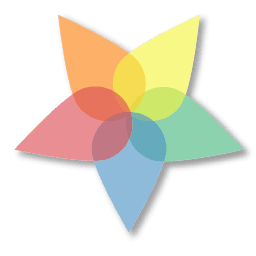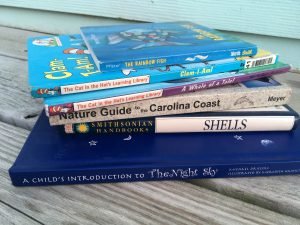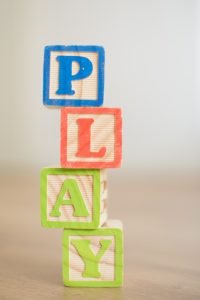 By the time summer rolls around, I am ready to kick my school year to the curb.
By the time summer rolls around, I am ready to kick my school year to the curb.
I’m tired of our curriculum, our routine, and the challenges. But, after a short break, the kids and I feel lost without our daily school time. So, to break things up, we usually do a summer unit study.
I have found there is a pretty simple recipe for creating a unit study that I have been able to adapt to almost every age and interest we have chosen. My favorite unit for summer has been the ocean as it is so easy to explore and it just feels good to study it this time of year.
So how do we build a summer unit study?
Here are my six easy steps to build a summer unit study about anything.
1. Start with some good books.
I like to choose both fiction and non-fiction. A great story, whether it is a picture book like Rainbow Fish or a novel like Treasure Island, is always the place I start my unit planning. I like to pick a book that I will read to my kids and then add a selection of books to our shelf that they can look through themselves, including search-and-find style books or ones with mazes or dot-to-dots, that go with our chosen theme. I always plan time to look at non-fiction books on our topics too, even if we only read a few pages. The pictures bring ideas to life.
 2. Choose some hands-on, go-along activities.
2. Choose some hands-on, go-along activities.
This is where Pinterest or Google can be amazingly helpful for hunting for something that is just the right amount of interesting but not so messy I will regret my life choices.
One year, we created an undersea collage on our living room wall. Each week we made a different sea creature out of paper, ribbons, glue, and pompoms to add to the wall. This was an amazing experience.
Other activities include building with Legos, coloring pictures, making jewelry, or writing fan fiction. Go with something your kids will enjoy that helps them relate to something in the book in some way.
3. Find a poem or song to memorize.
Small children love songs and nursery rhymes and a little hunting will turn up lots of choices. My Bonny lies over the Ocean and Row Row Row Your Boat were favorites here for a long time. With older students, I recommend hanging up a poem in your common area and reciting it each day. I always have the goal of doing more memory work during the school year and this is often an easy way to add something different. I also love finding silly songs to listen to while we create; Yellow Submarine, for example, is a summer classic here.
 4. Find something to watch about your topic.
4. Find something to watch about your topic.
Movies, documentaries, video games, YouTube videos, and podcasts can add another level of depth to any summer unit study. I have no problem adding in a movie that is “purely fun” and only sort-of goes with our theme at the end of the unit. After studying a variety of sea creatures, watching Finding Dory can lead to a lot of interesting discussions about sea life, and even give you more ideas for interesting things to look up. The migration patterns of sea turtles, for example, or how octopi can camouflage themselves.
My kids just love having “movie time” so I pop some popcorn and make it an event. Even documentaries are better with popcorn.
5. Don’t forget the food!
If there is any way to do something with food to go with a unit, go for it! I used to limit my food go-alongs to things like eating sushi while learning about Japan, but I have realized that cookies cut out to look like fossils, cakes decorated to look like the ocean and oddly shaped Rice Krispie treats bring a certain joy to my children that makes my most reluctant learner happy with a lesson.
 6. Get out there!
6. Get out there!
The other thing I find essential to a great summer unit study is a field trip or two. Sometimes we are lucky enough to be able to go to a museum, aquarium, or another ideal learning place for our units. But there are also a lot of unexpected ways to take your learning out into the world.
For our ocean unit, I took my kids to a pet shop when they were little. The fish there were interesting and we could investigate them for free. The person working the fish department that day was happy to answer questions and it was much less stress than dragging my kids to a fancy aquarium with a big price tag.
Another great summer field trip can include going out in a boat. Any kind of boat in any type of water gives your child a new experience and can be tied into a lesson on anything from marine biology to pirates to emigration.
7. Putting it all together.
Now, all you need to do is wrap all that up into a lesson plan. Start by choosing something to read each day, which could be as simple as the next chapter in your book. It could instead be repeating the same picture book, different picture books, or non-fiction information pages. It usually won’t be the whole book, if I’m reading. Pencil in when you will work on our poem, every day or every other day.
After that, add the activities, one per day, until you have a plan for your week or month. You might want to skip reading on a field trip day. You might find a craft takes time to dry and then has to be carried over to the next day. It is your unit study, so if you get “off schedule”- you can just extend the study a day or two. There’s no need to stress.
I hope you find a great idea and have an awesome unit study this summer!


 2. Choose some hands-on, go-along activities.
2. Choose some hands-on, go-along activities. 4. Find something to watch about your topic.
4. Find something to watch about your topic. 6. Get out there!
6. Get out there!



0 Comments